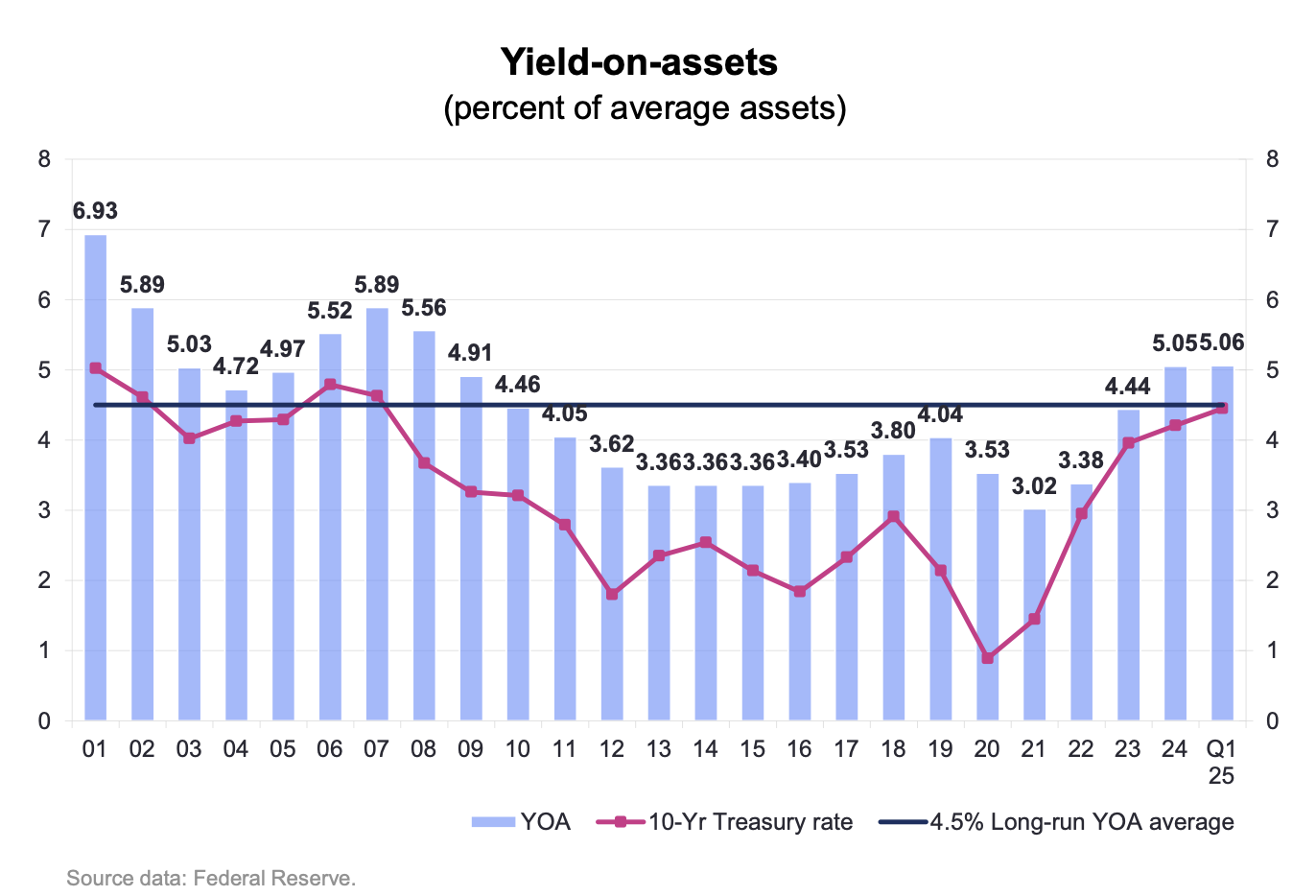MADISON, Wis.–Credit union yield-on-asset ratios rose to 5.06% in the first quarter of 2025, the highest since 2008 and above the 4.5% long-run average, according to a new analysis released as part of TruStage’s quarterly Trends Report.
The Trends Report also had detailed analysis of credit union performance by category, which the CU Daily reported earlier here.
“Credit union yield-on-asset ratios are highly correlated to the 10-year Treasury interest rate,” said Steve Rick, chief economist with TruStage and author of the Trends Report analysis. “Over the last 25 years, the ‘credit spread,’ or the difference between credit union yield-on-asset ratios and the 10-year Treasury interest rate, averaged around 1.25 percentage points.”
Today, Rick noted, that spread has narrowed to 0.61%, which typically occurs as the 10-year Treasury bond rate reaches its apex. The yield-on-asset ratio increased 204 basis-points from the record low of 3.02% set in 2021.
“This rise in interest earnings as a percent of assets is good news for credit unions, since 72% of their total revenues come from interest revenues,” the Trends Report states. “The other 28% of revenues come from fees, interchange income, gains on sale of mortgages, etc.”

The Rate Effect, the Mix Effect
The Trends Report notes that over the last year, yield-on-asset ratios rose from 4.84% in Q1 2024 to 5.06% in Q1 2025. Most of this 22-basis-point increase was due to amortizing loans and investments rolling over or repricing into higher interest rate loans and investments, called the “rate effect,” Rick explained.
The remainder of the 22-basis-point increase was due to the mix of assets shifting toward loans and away from lower-yielding investments, known as the “mix effect,” Rick added.
What to Expect
“Expect the yield-on-asset ratio to approach 5% by the end of the year as the Federal Reserve lowers the federal funds interest rate from 4.33% today to 3.83% in December,” the report forecasts. “This will lower the prime interest rate and therefore the interest rate on new loans and investments.”


